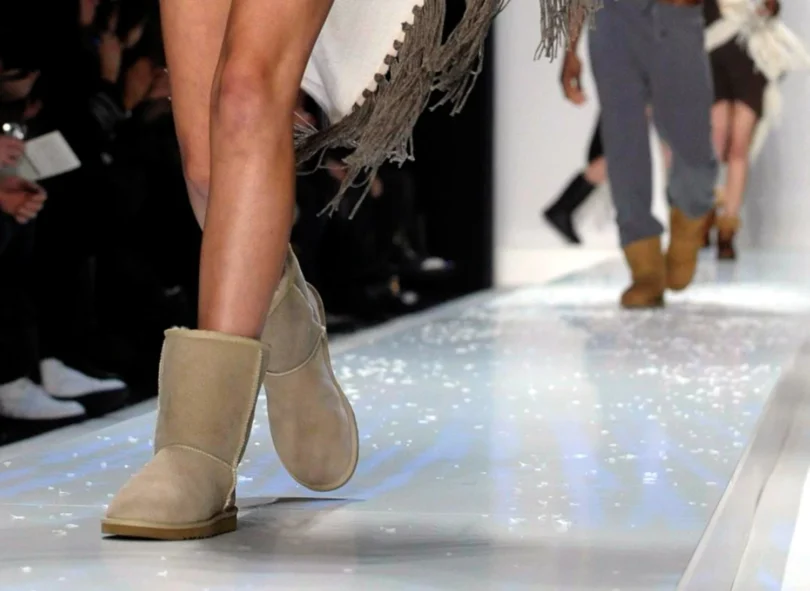Everyone should invest in a quality pair of boots. However, while making a purchase, consider the materials, use of boots, waterproofing, and other factors. In addition, the types of boots purchased will be determined by the purchasers’ individual requirements.
There are a few things to keep in mind when shopping for boots. Here are just a few of them:
Waterproof
Most boots have a waterproof membrane built into them, which is great for weatherproofing your boots and allowing you to cross streams without difficulty on your trips. However, keeping the rain out isn’t enough to avoid soggy feet; you also need to allow it out; otherwise, your boots will be clogged with sweat and humidity. To put it another way, you need to be able to breathe through your boots.
A gaiter, which is a waterproof cuff that fits over the highest point of your boot and affixes around the lower ankle, is another way to keep the rain out. As you walk through rain, snow, or wet grass, this prevents water from pouring down the top of your boot into your boot. They’re also useful for walking over scree or loose gravel, which can catch your shoes. Buy boots that fit your needs at uggs.com.au.
Use of Boots
Boots are designed to be used in a specific setting. The terrain and conditions you will be entering will influence characteristics such as sole stiffness and ankle height.
If you want to stay on well-worn and predictable trails, a lightweight boot or shoe with some flexibility is a good choice. Flexibility is beneficial in less difficult terrain because it allows your foot to move naturally and aids comfort on extended journeys. You’ll need a more robust boot with adequate ankle support if you’re going to be walking on uneven or very steep terrain. A higher cut will support and protect your ankles, while stiffer soles provide a more secure base to stand on.
Strolling envelopes various scenes, and most individuals will be someplace in this scale, so decide in favor of watchfulness to ensure you’re not left out.

Choose The Proper Size
Because feet can change size due to weight fluctuations, it’s crucial to measure the length, width, and arch of your feet to be sure you’re getting the right fit. Because the left and right foot may not always be the same size, make sure you measure both.
Additionally, you should buy shoes in the afternoon or evening, as your feet swell significantly after a long day of activity.
Finally, when putting on boots, wear socks to confirm that the shoes are comfortable even with socks on.
Look for Comfort
The inner section of the shoe that meets the foot’s sole is known as the insole. Each portion of the foot is supported by a suitable insole, which is flexible and adjusts to the foot’s movement.
Walkabout the store while trying on boots to get a sense of how comfortable they are in motion. As well as strolling, stand on the tips of your toes to check whether your toes have sufficient space to loosen up without being squeezed against the shoe’s tip and top.
Then, as if going up the stairs, elevate your heels to see if they’re shifting in your shoes. An excellent boot will have a firm hold on the heel, allowing you to walk easily.
Select Material That Works For You
The material of your boots is determined by your specific requirements. Leather boots are waterproof, sturdy, strong, and breathable, but they are also heavier and more rigid than synthetic textiles, making them less comfortable at times. Fabric boots have a more diverse upper, which may appeal to some people, and they don’t require as much breaking in because they are generally softer. They do, however, have some drawbacks, such as being more difficult to clean.
These selections will be dictated by your particular preferences, so trust your instincts and consider your previous walking experiences to decide which material will meet your needs and tastes.
Fastener types
The style of fastening affects the fit of your shoes as well. Lace-up boots, on the other hand, will keep your feet safe if you want to wear your boots for a lengthy walk. Boots with zippers, on the other hand, are preferred by the majority of people who wear them. Furthermore, when buying boots with zippers, be sure to test the zipper by pulling it up and down a few times. Boots with elasticated sides are also a good option because they are more comfortable. Furthermore, the fit of these shoes is superior to that of the competition. These stretchy boots are a must-have, especially if you have broader calves.

Features of Boots
Depending on the category, boots come with many features. The toe and heel components of several boot models can be swapped out. This is critical because as those parts deteriorate, their contact with the binding becomes less secure. Because of the significant wear on the bottoms of the soles, both junior boots, and freeride boots typically contain replacement toe and heel sections. Some boots have been designed with rockered soles to mirror a person’s natural walking pattern around ski resorts and base regions.
Some comfort characteristics have made their way back up to high-performance versions, as have materials used for warmth that are beneficial to all liners. To make it easier to put on and take off the boot, some liners include plush material, while others have slick material around the heel.
Conclusion
Quality is important, regardless of the style, function, or use of your footwear. Not everyone can afford the most expensive option, but most people should avoid the lowest. If you buy a $25 pair of boots, you’ll almost certainly regret it. Many businesses strive to provide a decent product at a reasonable price, so don’t feel obligated to choose a well-known brand.
Choose the one that is most beneficial to you. Investigate, experiment, and have a good time looking for information!






